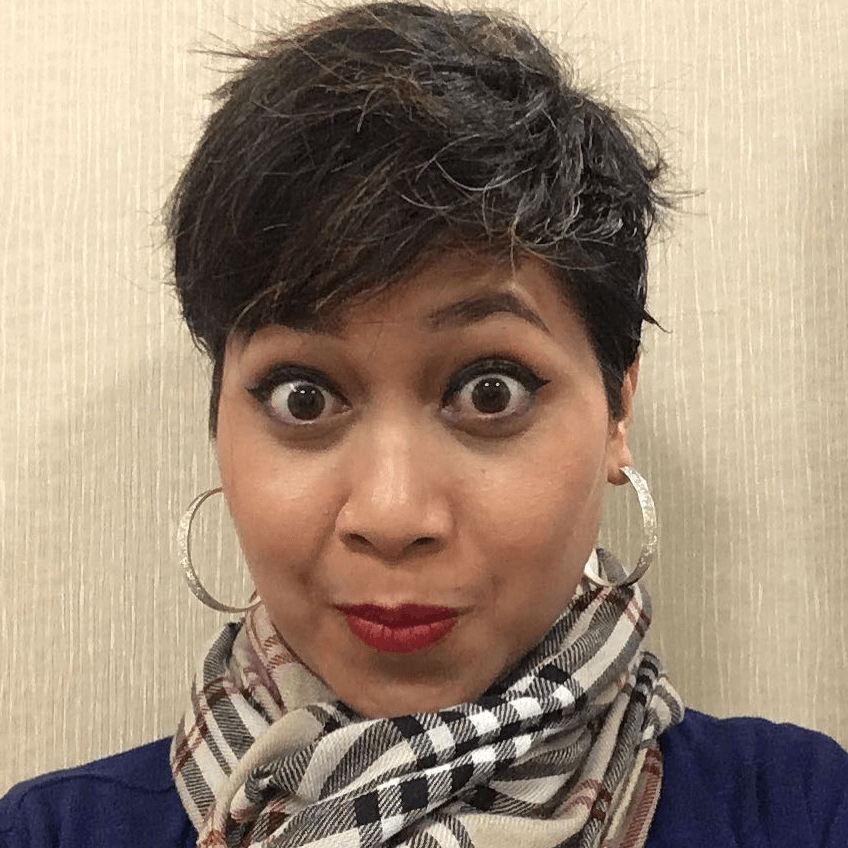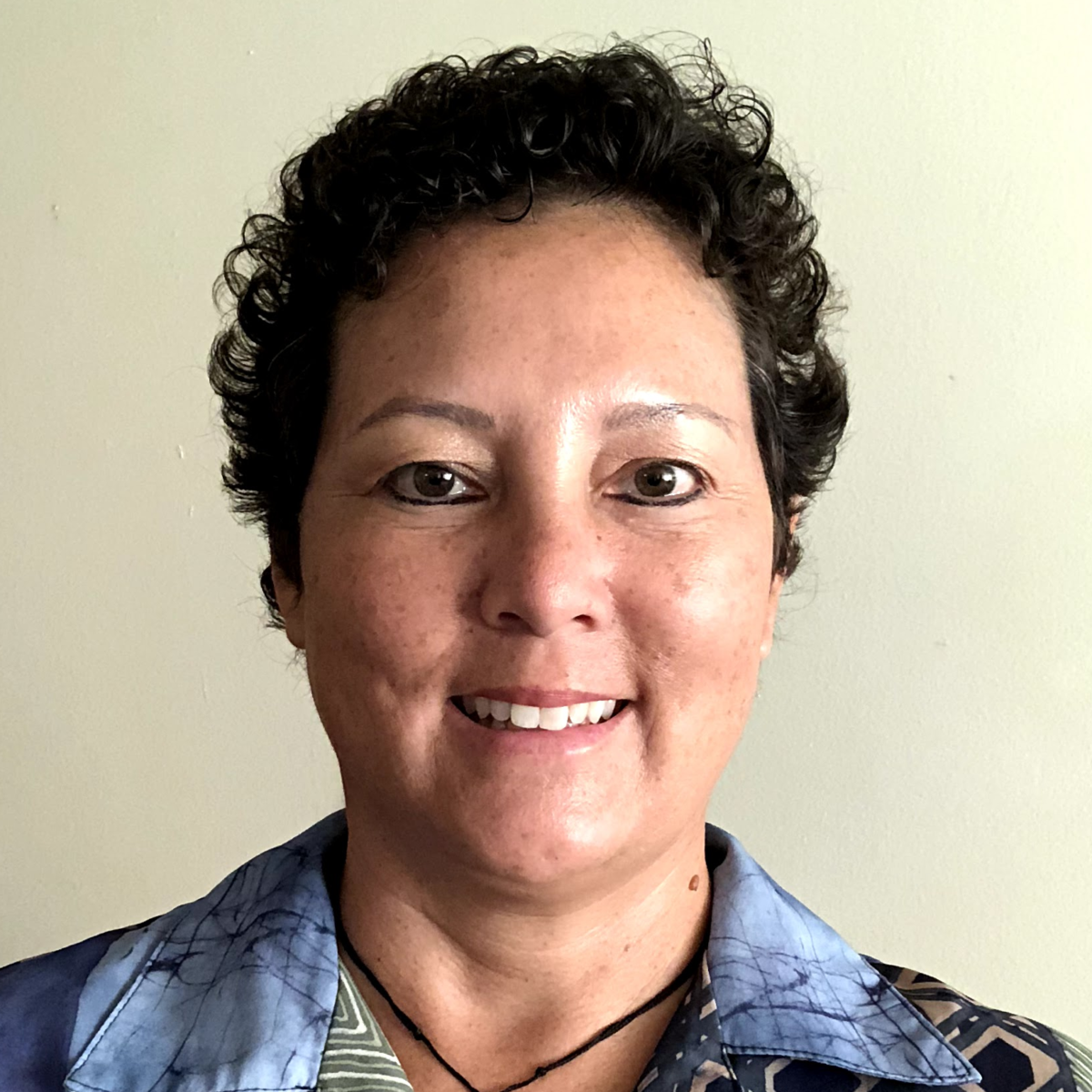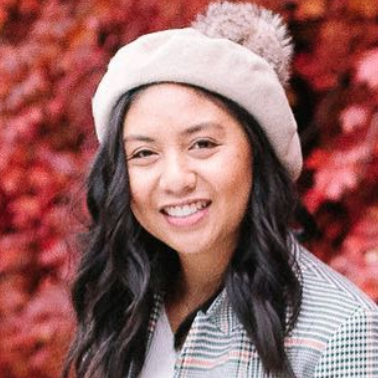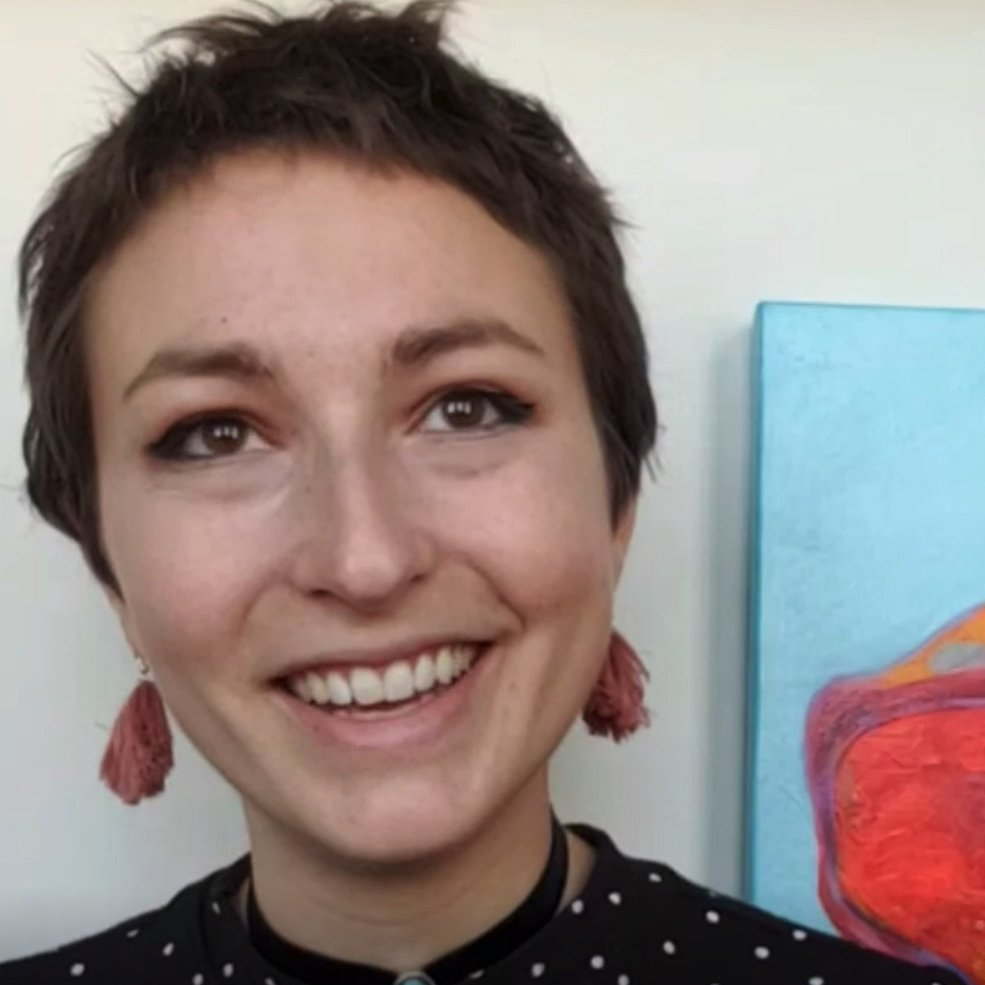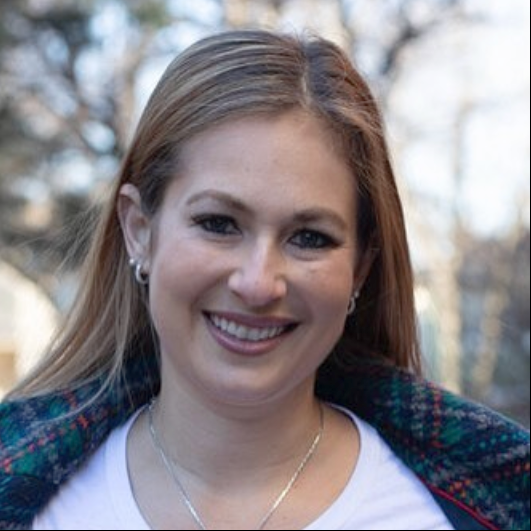Melissa’s Pregnant Stage 2B IDC Triple-Negative Breast Cancer Story
Melissa shares her stage 2B triple-negative breast cancer (TNBC) story, discovered when she was breastfeeding from her first pregnancy and pregnant with her second child. She details undergoing mastectomy, reconstruction surgery, and chemotherapy.
In her in-depth story, Melissa highlights how she navigated life with cancer, including managing the hair loss, dealing with financial toxicity in trying to figure how how to pay for treatment, and how she was able to handle being pregnant while going through cancer treatment.
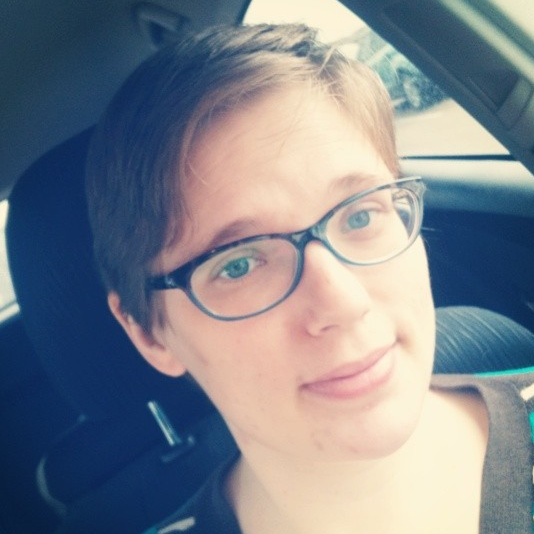
- Name: Melissa H.
- Age when diagnosed: 29
- Diagnosis:
- Breast cancer
- Invasive ductal carcinoma (IDC)
- Triple-negative (TNBC)
- Staging:
- 2B
- 1st Symptoms:
- Lump in left breast
- Mastitis (breast tissue inflammation) while breastfeeding
- Tests for Diagnosis:
- Ultrasound on left breast
- Ultrasound-guided biopsy on left breast
- Staging Tests:
- MRI with contrast
- CT scan
- Ultrasound-guided biopsy on lymph nodes (underarm, more sensitive)
- Genetic Tests:
- BRCA-negative
- NBN-positive
- Treatment:
- Left mastectomy (removal of one breast)
- D-Flap reconstruction + right mastectomy after discovery of NBN gene
- Chemotherapy
- ACF (Adriamycin, cyclophosphamide, ftorafur)
- “F” instead of “T” (Taxol) because of pregnancy
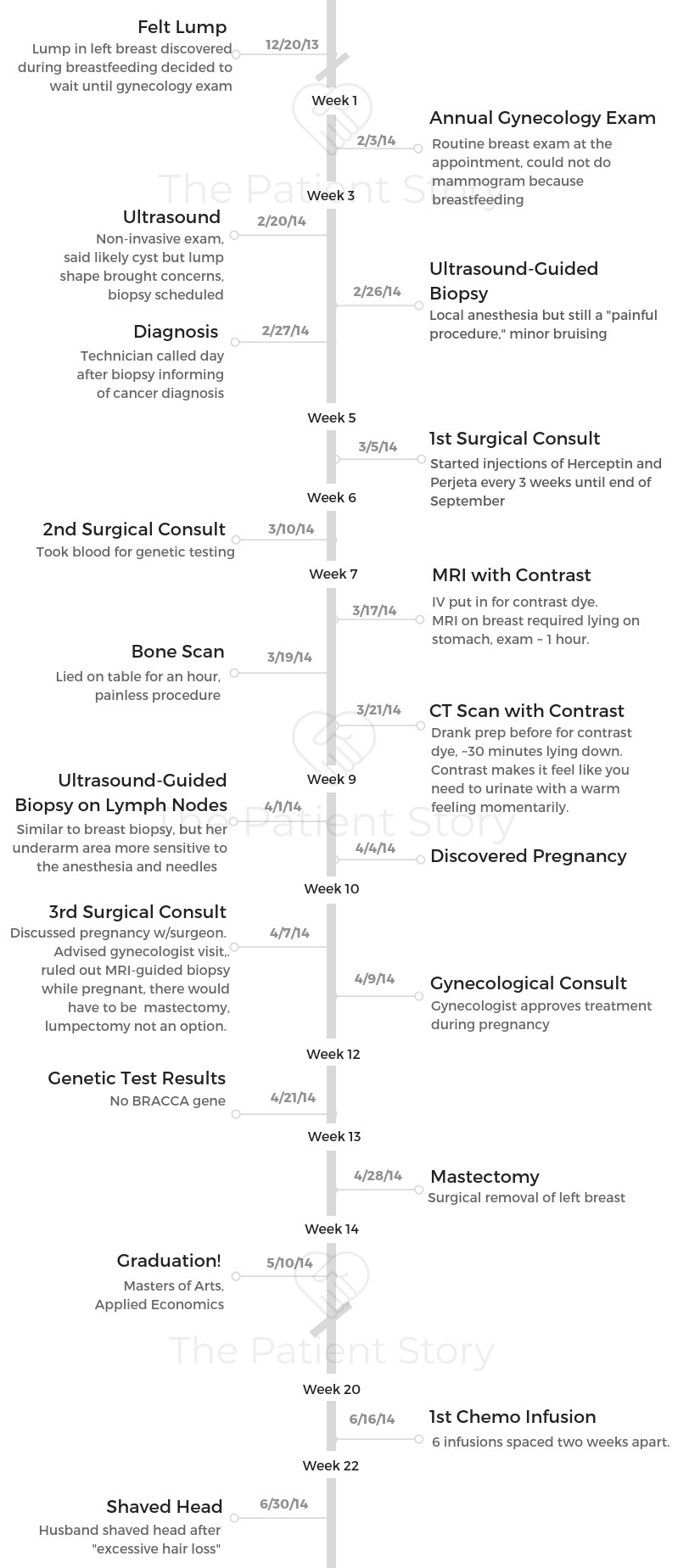
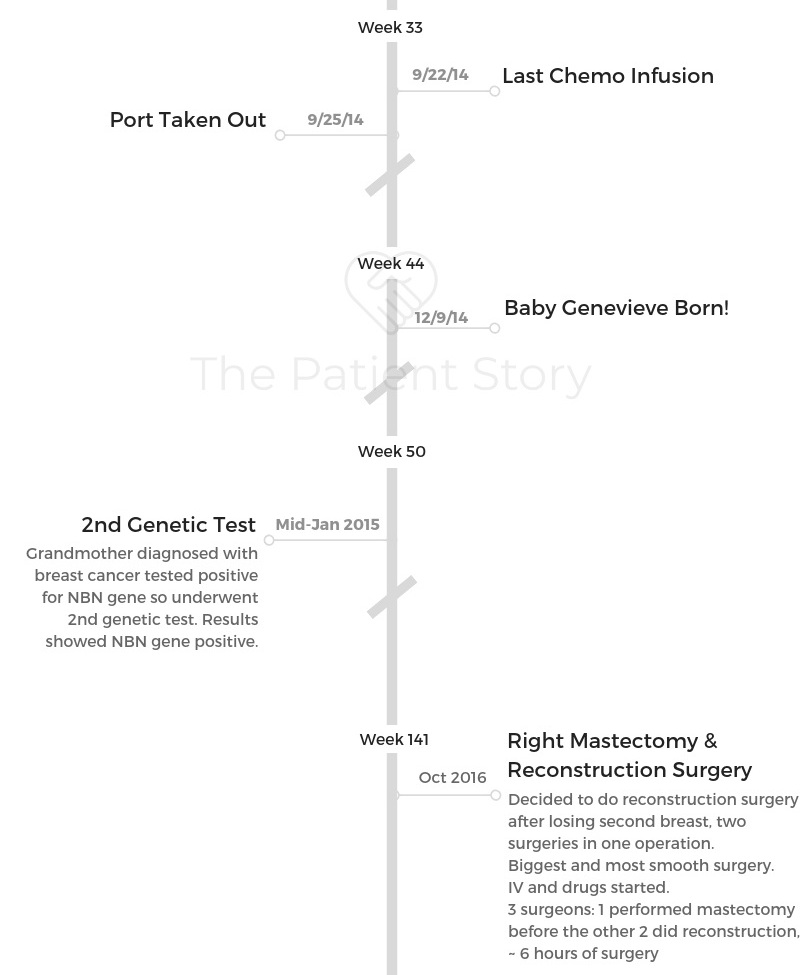
- Diagnosis
- How did you learn you had a lump?
- Describe the tests and scans you underwent for diagnosis
- How did you get the diagnosis?
- What were the next tests and appointments before treatment?
- You learned you were pregnant weeks later. What happened next?
- Breaking the news to your loved ones
- Genetic testing and results
- Treatment Decisions
- Surgery
- Reconstruction Surgery
- Chemotherapy
- Hair Loss
- Work & Finances
- Being Pregnant with Cancer
- How did you deal with being pregnant while treating cancer?
- What surprised you most about the entire process?
- What helped you manage your emotions and thoughts?
- Were there moments you had to advocate for yourself in and out of treatment?
- What type of outside support was the most helpful?
- What’s your advice to those heading into treatment now?
- Parenting with Cancer
This interview has been edited for clarity. This is not medical advice. Please consult with your healthcare provider for treatment decisions.
Diagnosis
How did you learn you had a lump?
My first daughter was born in December. I breastfed her, and in late December a year later, I felt something in my breast.
I thought it may be an issue related to the breastfeeding. Early on, I had experienced mastitis and painful issues related to breastfeeding.
This was different, though. It was not painful. It was a lump in my left breast, but felt like it was getting bigger.
I had an annual gynecology exam scheduled for February, so I decided to wait and discuss the issue with my doctor at that appointment.
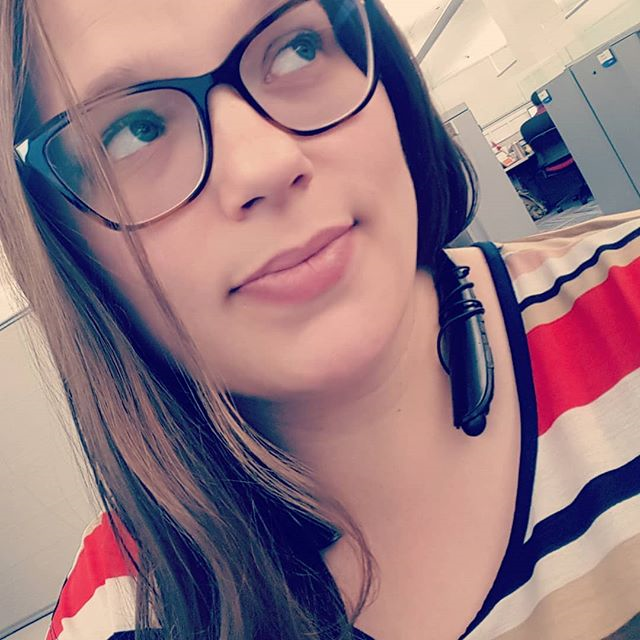
Describe the tests and scans you underwent for diagnosis
- Gynecologist Annual Exam (Early February)
- I had the initial doctor appointment with a breast exam. This is a normal breast exam you would have at an annual gynecological appointment.
I was still breastfeeding, so I could not have a mammogram. They decided I should have an ultrasound to have the lump checked out. The doctor said it was probably a cyst.
- I had the initial doctor appointment with a breast exam. This is a normal breast exam you would have at an annual gynecological appointment.
- Ultrasound on Left Breast (February 20)
- This is a non-invasive exam, just like an ultrasound when you have a baby. They did the exam and decided they should biopsy the lump just to make sure there was nothing to worry about. They said it was probably a cyst but that the shape or edges concerned them.
- This is a non-invasive exam, just like an ultrasound when you have a baby. They did the exam and decided they should biopsy the lump just to make sure there was nothing to worry about. They said it was probably a cyst but that the shape or edges concerned them.
- Ultrasound-Guided Biopsy (February 26)
- In this procedure, they used an ultrasound machine to determine where to take a biopsy from. They did use some local anesthetic, but this was a painful procedure. I had some bruising in the place they took the biopsy.
How did you get the diagnosis?
I was sitting at my house watching my 1-year-old daughter, waiting to go to my Thursday night class for graduate school.
I received a phone call about 3:45 p.m., and the technician asked if anyone was with me. I told him no, that my husband was at work but would be home soon.
He told me that I had breast cancer, the type, and told me I would need to see a surgeon.
I held my daughter and cried.
»MORE: Patients share how they processed a cancer diagnosis
What were the next tests and appointments before treatment?
- Surgical Consult (Early March)
- It took a little while to see a surgeon. I was originally scheduled to see one in Arlington, Texas, where I was going to school, on Monday March 3, 2014. On the morning of my appointment, it iced in Texas, and the office was closed.
- The next available appointment was a few weeks wait, so I found another surgeon in Grapevine, Texas, where I was moving. The second appointment was scheduled around the 10th of March 2014. At this appointment, they took blood for a genetic test.
- All of these scans were scheduled in the 3rd week of 16th-22nd of March in 2014, during my spring break from school. To have the exams that included contrast completed, I had to stop breastfeeding.
- MRI with Contrast
- To have contrast, they put an IV in, so there is some pain associated with that. To have an MRI on your breast, you are lying on your stomach with a device elevating you so that your breasts hang in front of you. This position was very uncomfortable.
- The exam took about an hour. MRI machines are small, and some people experience claustrophobia. I personally try and keep my eyes closed and daydream. I personally experience getting headaches after MRI exams. I usually feel better the next day.
- Bone Scan
- This was similar to an X-ray to me. I just laid on a table for about an hour.
- This was similar to an X-ray to me. I just laid on a table for about an hour.
- CT Scan
- I had to drink the prep for this, and it made my stomach feel blah. I had to go to the bathroom a lot. The actual procedure isn’t too bad and is about 30 minutes, just lying down and IV for contrast.
The machine and technician gave instructions on breathing at specific points, and the contrast makes it feel like you need to urinate with a warm feeling momentarily.
- I had to drink the prep for this, and it made my stomach feel blah. I had to go to the bathroom a lot. The actual procedure isn’t too bad and is about 30 minutes, just lying down and IV for contrast.
- Ultrasound-Guided Biopsy on My Lymph Nodes (First Week in April)
- After my MRI, there was concern about the cancer having spread to my lymph nodes. This was similar to my breast biopsy, but having anesthetics and needles in your underarm is much more sensitive.
You learned you were pregnant weeks later. What happened next?
- Learned I Was Pregnant (End of the 1st Week of April)
- Surgical Consult (2nd week of April)
- At this consult, I discussed my pregnancy with my surgeon. I could tell he was uncomfortable with the situation, and he advised I see my gynecologist.
- He said I could not have the MRI-guided biopsy while pregnant and that a lumpectomy was not an option. I would have to have a full mastectomy.
- Gynecology Consult
- I met with my gynecologist to discuss the pregnancy. He told me it was possible to do treatment while pregnant.
- I met with my gynecologist to discuss the pregnancy. He told me it was possible to do treatment while pregnant.
- MRI-Guided Biopsy to Check Second Spot in Breast
- This exam never happened due to my pregnancy. I could not get the contrast for the MRI because I was pregnant. Because of not being able to have this exam, it was decided I would need a full left mastectomy and was not a candidate for a lumpectomy.
Breaking the news to your loved ones
I told my husband on the phone immediately after I found out. He was in disbelief. He kept saying that I was too young to get cancer during all my testing.
I went to my mom’s house to tell her. She was very worried.
»MORE: Breaking the news of a diagnosis to loved ones
Genetic testing and results
At my first surgical consult, I decided to get genetic tests because I was very young to have breast cancer. If I received a positive genetic test for an indicator, they were suggesting I have a double mastectomy.
I received the results in mid-April. I did not have a BRCA gene marker.
My grandmother was diagnosed with breast cancer shortly after me, and they did an extensive genetic test for her. Her test came back NBN positive, a more rare but similar marker to BRCA.
I did have a second genetic test months later that came back showing I had the same NBN gene mutation.
Treatment Decisions
How did you decide where to get treatment?
I originally wanted to see a highly-rated surgeon in Arlington, but after having an appointment cancelled due to an ice storm, the surgeon did not have any opening in the near future. I then decided to go with a surgeon in Grapevine that had an opening to start the process sooner.
Did you get a second opinion?
I did not get a second opinion, but I did consult with multiple doctors about the pregnancy and treatment.
What size was your treatment center, and what did you like about that?
All of my treatment was done at Baylor Grapevine. This is a mid-sized hospital. All of the doctors’ offices were near the hospital, though they are not all the same business.
It was nice that all the services were in one place. Most of the exams and testing were easily shared between offices.
Describe your medical team
There was a coordinating nurse at my surgeon’s office. She was the most helpful in the beginning.
After the surgery, I met my oncologist. She was also very caring and helpful with all my complications.
I met a gynecologist the first time I was hospitalized during chemo in the summer, and she was very helpful and supportive.
I moved to her so that all my doctors were in one place. She has been an ongoing advocate for my health since then.
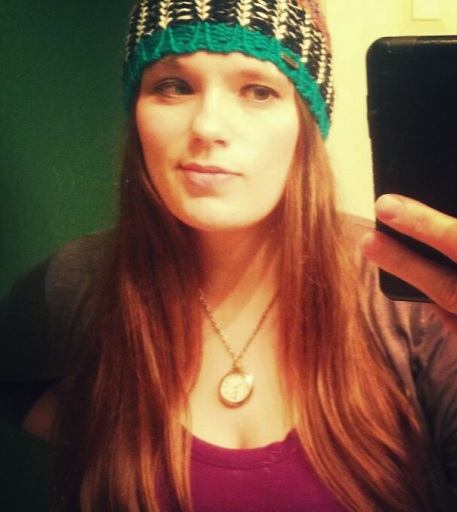
Surgery
Deciding between a lumpectomy and mastectomy
After learning I was pregnant, I had to have a mastectomy. I was terrified of this. The thought of losing my entire boob and nipple was just unthinkable.
Because my first genetic test came back negative for BRCA, they did not suggest having a double mastectomy.
The next year, after having a second genetic test that showed I have NBN mutation, my oncologist and obstetrician wanted me to have a mastectomy on my remaining breast.
After living a year and a half with one breast, I decided to have reconstruction and a right prophylactic mastectomy.
Describe the surgery (mastectomy)
I was absolutely terrified of my first surgery, a left mastectomy and removal of all the lymph nodes under my left arm.
They also put my port in during this surgery on my right side. I had only ever had my wisdom teeth out and had never had any serious medical things like this.
I really didn’t like the idea of losing a breast, and I was very worried about living to see my daughter grow up and surviving to give birth to the daughter I was pregnant with.
On the day of surgery, I went in and did all the preoperative things, where you speak with the doctor and anesthesiologist. I remember being very nervous and worrying.
I remember saying, “Wow, not very many people get to see this,” speaking about the operating room right before I was put under. Operating rooms are always cold.
What do you remember waking up from surgery?
When I woke up from surgery, I was in a bed being wheeled down a hallway. There was a lot of pain.
In the recovery area from surgery, I was having trouble breathing the way they wanted me to, and I couldn’t get more pain medication until I was breathing how they wanted.
During an appointment before the surgery, one of the people doing the intake for the surgery had told me to breathe slow and steady, but right after the surgery, I think they wanted me to breathe more normally. It was hard to do because I was in a lot of pain.
I remember being coherent in the hospital room and being terrified of looking down and seeing where my breast was removed. It was just a reality I did not want to deal with.
I also did not realize that my port would be on my right side, so I had something impacting on me both sides of my body.
A total side note, but please ask. My port was put in by a male surgeon and is a horizontal scar in a very visible place on the right side of my chest.
I used a different breast surgeon for my second surgery, a woman, and she said she puts the port scar vertically around where your bra strap would be. I would have loved to know this before I had the port put in.
I was only in the hospital 1 night and went home the next day. I did not realize how much the surgery would affect my arms. At this point I had a 1-year-old at home to take care of. I could not lift her for about 6 weeks after surgery.
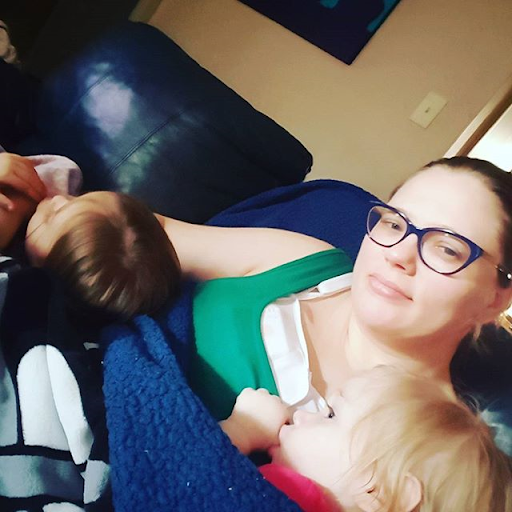
Were there any side effects post-surgery?
During the days after my surgery, I walked and tried to move around as the surgeon tells you to. I started having a pain in my chest a few days after I came home.
It got worse. The Friday after my surgery, I called my surgeon. He told me he was on vacation and that I should walk around.
My husband made an executive decision and made me go to the emergency room. [During] intake, they asked me to rate my pain. I said about a 5 or 6, even though the pain was making me cry and I had trouble moving around.
This has been an ongoing joke between us since then that I have a skewed perception of the pain scale and perpetually underrate the amount of pain I am in.
At this point in my life, I had had a natural birth with my first daughter, and this pain was worse than that. It was definitely a 10.
They didn’t want to do much testing because I was pregnant, but they did do a chest X-ray and made sure my stomach was covered. They diagnosed me with a pulmonary embolism.
I stayed in the hospital about 5 days, where I received pain medication and blood thinners. Before I could go home, I had to show that I could administer my blood thinning shots to myself in my stomach.
Giving yourself blood thinner shots
Before cancer, I was absolutely terrified of shots and needles. I came to the conclusion somewhere in these first few months that I would just have to get over it.
Be healthy and keep my growing baby healthy or not do [anything] — it’s really not a choice.
This first self-shot, though… It was very hard to look down and watch yourself give yourself a shot in your belly. After much internal freaking out, I did manage to do it.
I was put on blood-thinning shots from this point to the end of my pregnancy and 6 weeks after. Also, any time I have a surgery or am pregnant, I have to go back on blood thinning shots.
Reconstruction Surgery
What motivated you to eventually pursue reconstruction surgery?
It took me time to come around to having reconstruction. Originally, I could not have reconstruction because I was pregnant at the time of my mastectomy.
Due to my experience from that surgery and the following pulmonary embolism, I really was not keen about having any other surgery. My doctors, after receiving a positive genetic abnormality test, wanted me to have a prophylactic right mastectomy.
I had lived with only 1 breast for a little over a year, and I hated it. Clothes don’t fit right. Prosthetics are hot and heavy. Being a larger-chested woman, I looked oddly lopsided.
With my doctor’s recommendation and my discomfort, I decided that if I was getting a second mastectomy, then I would also do reconstruction all at the same time so only 1 surgery would happen.
I will also say my husband and family were supportive of any decision I made. [They] also told me I was young and this would be with me for a long life.
Describe the reconstruction surgery process
Even though this is the biggest surgery I have had — and the longest — it was also the smoothest surgery I have had.
I went to the hospital early. My husband and I were nervous. They got the IV and drugs going. The surgeon came in, and I stood up so he could draw markers for him to follow on my body.
I kissed my husband, and they took me back. This surgery was a team of 3 surgeons, 2 in tandem doing the reconstruction and 1 that did the mastectomy before the reconstruction.
It was about 6 hours of surgery, and when I woke up, they helped me manage my pain well. I was so extremely excited that I had boobies again that I deliriously told everyone that entered my hospital room about getting to have both my boobs again. I really remember having a big smile.
There were monitors about where my nipples would have been that constantly monitored and reported data back to my surgeon. The little monitors glowed a little.
They had me on a schedule to walk around and checked on the reconstruction constantly. I was in the hospital about a week.
Why did you choose DIEP-flap surgery?
(“A type of breast reconstruction in which blood vessels called deep inferior epigastric perforators (DIEP), and the skin and fat connected to them are removed from the lower abdomen and used for reconstruction. Muscle is left in place.”- National Cancer Institute)
Primarily my age. I was in my late 20s when diagnosed. Implants have upkeep and replacement throughout their life. I really like that it is my own body tissue they rebuilt my breasts with.
Chemotherapy
You had to wait before starting chemotherapy
I had to wait to start chemotherapy until my second trimester in my pregnancy so that the placenta was fully formed and would protect the baby from the drugs.
When the placenta is fully developed, the chemotherapy molecules are too large to pass through the placenta wall.
Describe your chemotherapy regimen
I started chemotherapy on June 16. I was receiving 6 infusions, spaced 2 weeks apart.
What was different about your chemo regimen because of the pregnancy?
I did not start chemotherapy immediately after my surgery. The chemotherapy regimen was also altered. I received ACF (fluorouracil, or 5-FU) instead of the more common ACT (Taxol).
Taxol is not safe for pregnant women. I received all 3 drugs during each infusion. The Adriamycin was delivered over 72 hours in a take-home pump that was attached to me.
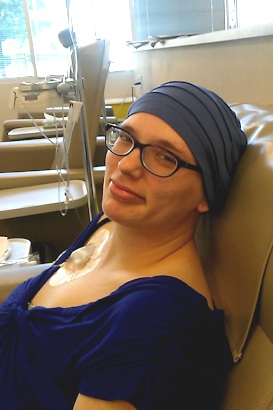
What were the side effects, and what helped you with them?
Side Effects: hair loss, fatigue, nausea, vomiting, constipation, lack of appetite, a rash on my hands after every infusion, chemo brain, anemia, and anxiety
»MORE: Cancer patients share their treatment side effects
Hair Loss
Describe the hair loss from chemo
I had always had long hair when I was diagnosed. It was in some ways part of my identity. It was upsetting to know that this was a necessity of the treatment.
Once I came to terms with the reality that no matter what, I wanted to keep my baby safe and live to see my daughter grow up, losing my hair was just something I would have to get over. I tried to do fun things like buy different and non-norm wigs.
One had purple, and one was bright red. If I had to wear a wig, it was going to be fun and something new for me.
Were you surprised by your reaction to the hair loss?
I was surprised how fast it went. When it started falling out, it went quick.
I think when I had to clear the shower drain 3 times in 1 shower, that is when I knew it was time to let it go.
What helped with the hair loss?
I used wigs and hats. In the summer, I found the hats/caps more comfortable and cool. I had a nice one made of bamboo that was very breathable.
Did you know about cold caps?
No, I didn’t know about cold caps at the time. I also feel that my energy was best used in other ways. Just let it go. It grows back.
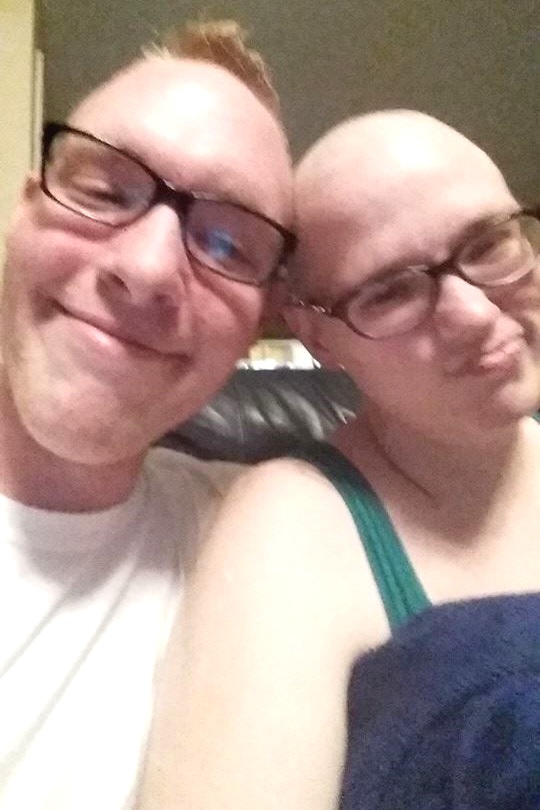
Work & Finances
You were a grad student. Could you study during treatment?
Yes, I was in graduate school the whole year of my treatment. I was diagnosed in spring. I vividly remember having to try and tell my professors.
It is hard to talk about something you haven’t accepted to someone who is not close. I made all A’s in my graduate classes while going through cancer.
»MORE: Working during cancer treatment
Paying for cancer treatment
Awful. I wasn’t working. I just didn’t feel like anybody would hire me being pregnant with cancer. I just felt that as a no -tarter, like this is not going to happen.
Through the whole thing, I was on government assistance. I did WIC (Women, Infants, and Children U.S. government program) for my pregnancy. We got food stamps. I think my kids were on the insurance, but I maintained my insurance through my school.
The only reason we made it through that year is just using all credit available to us — I think we almost lost our house 3 or 4 times — and just asking family.
I remember the last time we had to pay rent before I got hired at my current job, and we didn’t have half the rent. We couldn’t get it, and my husband’s grandmother loaned us the money.
About a week later, I got a job. I was just so grateful that we didn’t lose our apartment right before this was all going to finally end.
It was really hard. Even though I had insurance, you have a deductible, a maximum out-of-pocket, which is high when you’re not working, when your husband gets laid off more than once, and you can’t even pay that.
I experienced trying to juggle promises to pay doctors. Here’s an example. My oncologist, that’s one doctor that I absolutely have to pay this doctor because I have to keep seeing him.
I went through this period, and it was in the winter, and you have to go there all the time.
Every time I’d go there, I’d sit down with somebody, and they’d be like, “You owe us money. When are you going to pay this?”
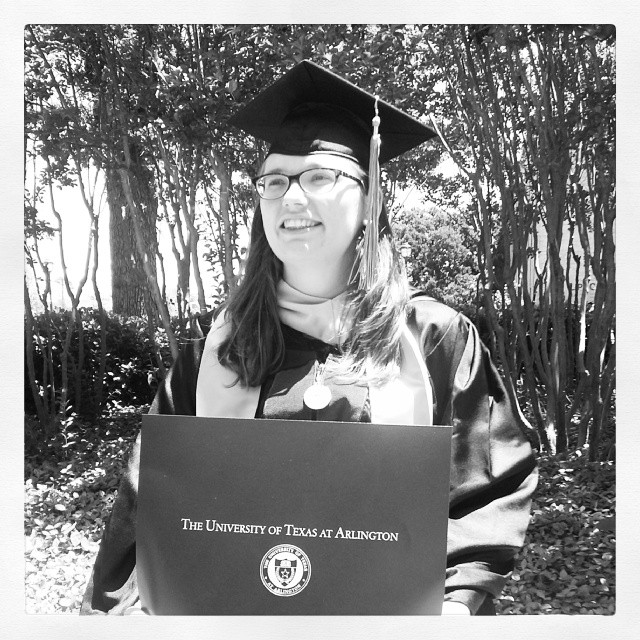
I’d go through this thing like, “I’m pregnant. I don’t have a job. I have cancer. I can’t get a job right now. My husband just got laid off. I literally can’t pay you. I don’t know what you want me to do. Do you want me to leave? That’s the only option I have.”
Even though I applied for that kind of stuff, I didn’t receive any of it. No charities helping, nothing. I was literally super pregnant. I had cancer. We couldn’t afford anything.
It was really hard, and I’m still dealing with the debt from that period of time. As soon as I got my job, we finally got to a place where we were okay.
My husband’s going to school now. I’m the only one supporting our family of 5. I make enough money for us to pay our current liabilities, but I haven’t been able to pay down all the debt that I received from that period.
You had to juggle the finances while figuring out how to be pregnant with cancer
It’s stressful, and it’s just hard. On top of everything, I think what I kept thinking in the moment was, “I’m literally trying to fight for my life right now. Can this just not be a thing right now? Can we just hold off on this? Just let me get this baby out. Let me get a little bit further on, and then can I please deal with it then?”
That’s not what happens. It all comes at you at once, and you’re going to have to deal with literally everything.
It is because there’s just so many layers. It’s really hard. That’s the other thing. The oncologist office obviously deals with people with cancer all day long, but they have people that have to collect your money. They won’t let you go to your appointment until they talk to you.
On the one period in December, they were going through a change of staffing. Every time I went in, there was a different billing person that I’d have to go through this entire scenario to him every time.
It was just like, “I can’t do this again, guys. It’s really raw right now. It’s hard to talk about it. You’re going to make me cry. I just can’t.”
How did you get through the financial stress?
When I started kind of freaking out, my partner would be like, “Hey, let me do that. You don’t worry about that. Let me go to talk to them.”
He would step in and try to help me refocus my energy. Not saying that I didn’t still do all of it — go into the WIC office to apply for stuff or the trying everything. It’s just hard.
You find yourself with a certain aspect of your life that is just overwhelming. Maybe set that aside for a minute and focus on something else for a little bit.
I think something my husband helped me with was, even though it’s probably not the best advice, “It’s okay to have debt. We’re going to have some debt. That’s okay. The most important part is we need you to live.”
That’s kind of what my husband would say, like, “Hey, let’s just focus on having this baby. Let’s just focus on getting to the end of this.”
Before, I had an amazing credit score. I didn’t have any debt. I just hadn’t dealt with this kind of financial problem before. Just being okay with the fact that that was going to be a thing. It was hard for me that we weren’t going to be able to do it.
Accepting that failure was hard, but it’s okay. I’m still living. My girls are happy. We’re doing our thing here.
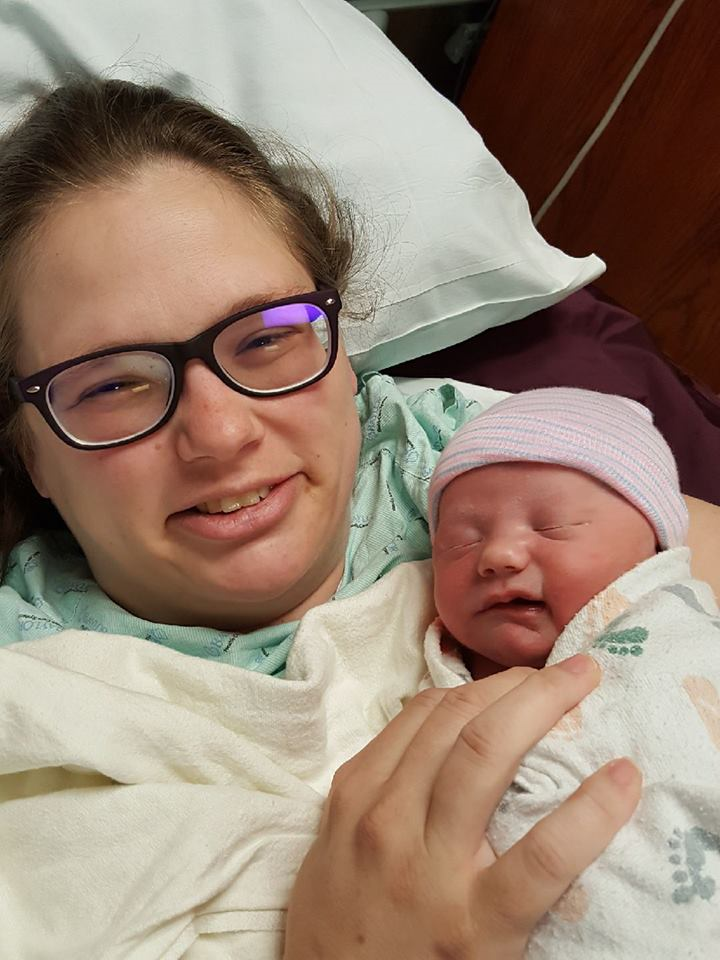
Being Pregnant with Cancer
How did you deal with being pregnant while treating cancer?
I think the biggest thing I remember about it is being so freaked out when I first found out I was pregnant, like, “Oh my god. What do I do now?”
Then when I first talked to the doctors, they were like, “Hey, this is a possibility. We can do this. There’s a thing for that. There’s a method to deal with this for this situation that people have done. You’re not the first person this happened to.”
Realizing that it’s not one or the other. You can do both.
That felt crazy at the time. I don’t have a lot of pictures of me being pregnant while I had cancer, because my body felt so weird because I went through the change of losing my breast, then you’re going through the pregnancy changes, and I lost my hair.
I didn’t feel good about myself. I just didn’t feel comfortable, so I don’t have a ton of pictures of me just being pregnant with cancer because it just felt so weird.
It was a whole mind trip thing. But my doctor said something like, “Most people go through cancer and then they just get through it, but you get a present at the end. You get a baby.”
What surprised you most about the entire process?
I felt like cancer was on the edge of knowledge. Before, I would think of a doctor as always knowing exactly what to do and how to treat everything.
After, I just feel like I was there on the edge of science, medicine, surgery, genetics, and in a developmental realm. This was unsettling. I had to trust that my doctors had enough experience and study that they would be able to get me through this.
What helped you manage your emotions and thoughts?
My husband primarily. Being brutally open and honest with him about everything. My fears of death, worry for our future, and even how I was physically feeling if it was off. Being with my family. Holding my daughter.
I did take anxiety medication after my baby was born.
Were there moments you had to advocate for yourself in and out of treatment?
Mostly letting them know what was going on and if I felt off. Get a second opinion.
» MORE: How to Be Your Own Advocate
What type of outside support was the most helpful?
Letting people bring food after surgeries and letting grandparents help with my daughter.
»MORE: What kind of support cancer patients say helped the most
What’s your advice to those heading into treatment now?
Let your friends and family help. Let them know when you need help. Let them know how to help.
Don’t let people’s reactions to your diagnosis bother you. It is shocking for them, too, and not everyone handles this the same.
Parenting with Cancer
How was it raising your first child during treatment?
Hard. She was 1 in 2014 and a handful to keep up with.
What are extra considerations you had as a parent undergoing treatment?
I had a take-home chemo pump for my Adriamycin and had to keep it on for 72 hours. They said it would be better for my daughter to not be with me while I had it on.
It was sent home with a biohazard cleanup kit and pretty intense instructions for if the pump came out. I had other people keep her for 3 days until it was removed.
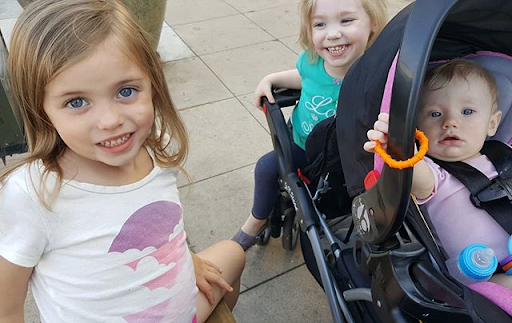
Do you have to get outside help with kids?
Yes, I had a lot of help from my mom and family.
Any advice to other parents about how to deal with all the stress?
You are allowed to not be super Pinterest mom. You will not be perfect, and that is okay. Do what you can when you can, and ask for help when you can’t.
»MORE: Parents describe how they handled cancer with their kids
Breastfeeding was tough
I breastfed my first daughter until she was 14 months and only stopped when I was going through staging for cancer. I had a left mastectomy but still had 1 breast when I had my second child.
I felt a lot of personal pressure to be able to breastfeed her, and I had a lot of trouble after she was born. She was tongue-tied and very hard to latch. I struggled, and my OB/GYN talked with me a lot about it. I decided to use formula.
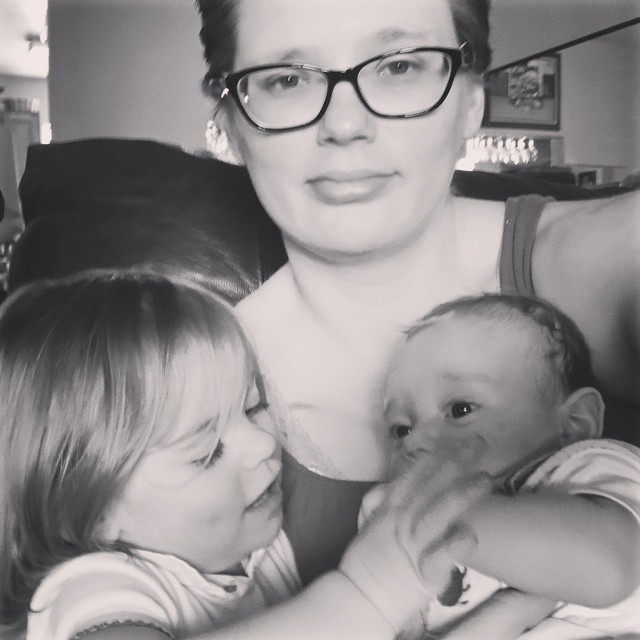
Advice to other parents on this
Everything went a lot better after I allowed myself to not feel bad about having trouble breastfeeding her.
I did breastfeed her for about 4 months and stopped when I started a full-time day job while finishing graduate school, but we also formula-fed her to supplement. She moved to only formula after I started working.
Last message
Time will keep going, and your treatment will come to an end. After that, life keeps going.
You get better. It is hard, but it passes. You can do this.
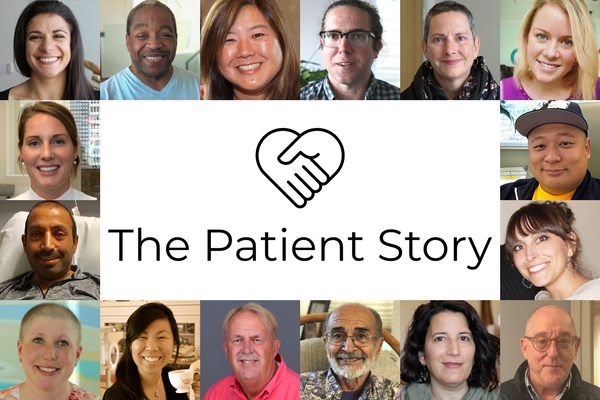
Inspired by Melissa's story?
Share your story, too!
Invasive Ductal Carcinoma Stories
Amelia L., IDC, Stage 1, ER/PR+, HER2-
Symptom: Lump found during self breast exam
Treatments: TC chemotherapy; lumpectomy, double mastectomy, reconstruction; Tamoxifen
Rachel Y., IDC, Stage 1B
Symptoms: None; caught by delayed mammogram
Treatments: Double mastectomy, neoadjuvant chemotherapy, hormone therapy Tamoxifen
Rach D., IDC, Stage 2, Triple Positive
Symptom: Lump in right breast
Treatments: Neoadjuvant chemotherapy, double mastectomy, targeted therapy, hormone therapy
Caitlin J., IDC, Stage 2B, ER/PR+
Symptom: Lump found on breast
Treatments: Lumpectomy, AC/T chemotherapy, radiation, hormone therapy (Lupron & Anastrozole)
Joy R., IDC, Stage 2, Triple Negative
Symptom: Lump in breast
Treatments: Chemotherapy, double mastectomy, hysterectomy
